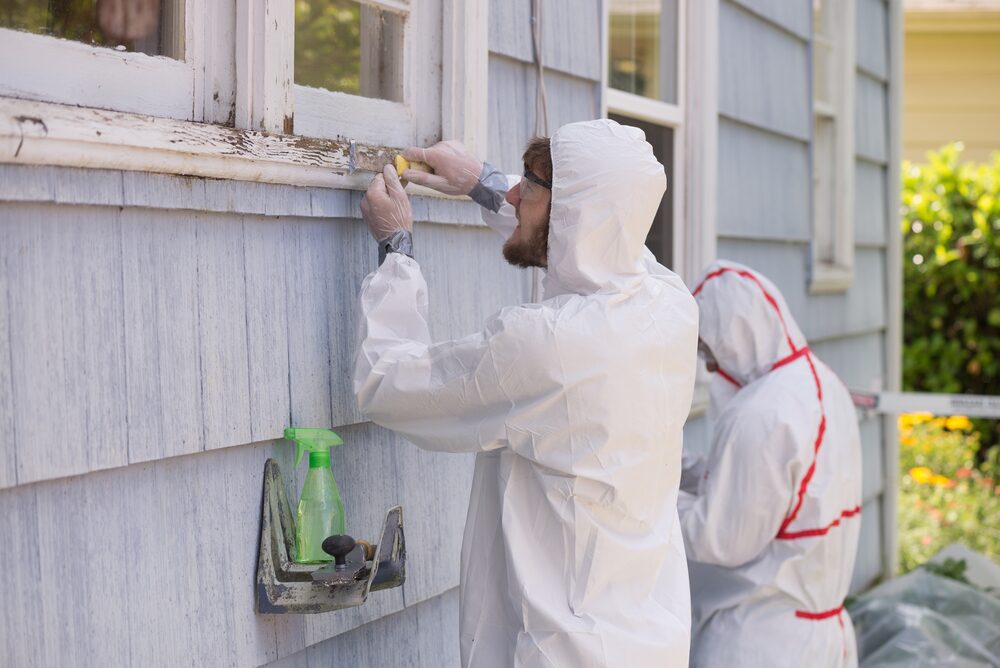Lead paint is a serious health hazard, particularly in older homes and buildings. Improper removal can release harmful lead dust into the air, posing risks to both workers and occupants. At P & D Envirotech, we specialize in safe and effective hazardous material removal. If you’re wondering how to perform lead paint removal while minimizing toxic dust, this guide provides essential steps and precautions to ensure safety and compliance.
Understanding the Dangers of Lead Paint
Lead-based paint was widely used before the 1970s, and when disturbed, it can release microscopic lead particles into the air. Prolonged exposure can cause serious health issues, including:
- Neurological and developmental damage, especially in children.
- Respiratory problems due to inhalation of lead dust.
- Kidney and cardiovascular complications from prolonged exposure.
Steps for Safe Lead Paint Removal
To safely remove lead paint without releasing toxic dust, follow these best practices:
1. Assess the Work Area and Plan Accordingly
- Identify areas containing lead-based paint through professional testing.
- Ensure all occupants, especially children and pregnant women, vacate the area.
- Seal off the workspace with plastic sheeting to prevent dust from spreading.
2. Choose the Right Removal Method
There are multiple methods for removing lead paint safely:
- Encapsulation: Applying a special coating to seal the lead paint, preventing dust from forming.
- Chemical Stripping: Using lead-safe paint removers to dissolve the paint without generating dust.
- Wet Sanding or Wet Scraping: Keeping surfaces damp during removal to prevent airborne dust.
- Low-Heat Removal: Using infrared heat to soften and remove paint without burning it.
3. Use Proper Personal Protective Equipment (PPE)
- Wear a HEPA-rated respirator mask to prevent inhalation of lead particles.
- Use disposable gloves, goggles, and coveralls to avoid skin contact.
- Change out of contaminated clothing before leaving the work area.
4. Implement Dust Control Measures
- Keep surfaces damp during removal to suppress dust.
- Use a HEPA vacuum to clean debris rather than sweeping.
- Avoid dry sanding, high-temperature heating, or open-flame torching.
5. Properly Dispose of Lead Paint Waste
- Collect all debris in sealed, heavy-duty plastic bags.
- Follow local hazardous waste disposal regulations for proper removal.
- Never dispose of lead-contaminated materials in regular household trash.
6. Conduct a Thorough Cleanup and Final Inspection
- Use a HEPA vacuum to remove any remaining dust from surfaces.
- Wash all work areas with a damp cloth and lead-safe detergent.
- Conduct a lead clearance test to ensure all traces of lead are eliminated.
Why Professional Lead Paint Removal is Recommended
While DIY methods can be effective for small areas, professional lead paint removal ensures:
- Full compliance with environmental and safety regulations.
- The use of advanced containment systems to prevent exposure.
- Thorough post-removal cleaning and verification of lead elimination.
Final Thoughts
Knowing how to perform lead paint removal safely is crucial to protecting your health and preventing lead contamination. By using the right techniques, protective equipment, and disposal methods, you can effectively remove lead-based paint without releasing toxic dust.
For expert lead paint removal services, trust the professionals at P & D Envirotech to handle the job safely and efficiently. Contact us today to ensure your property is lead-free and compliant with safety standards.
